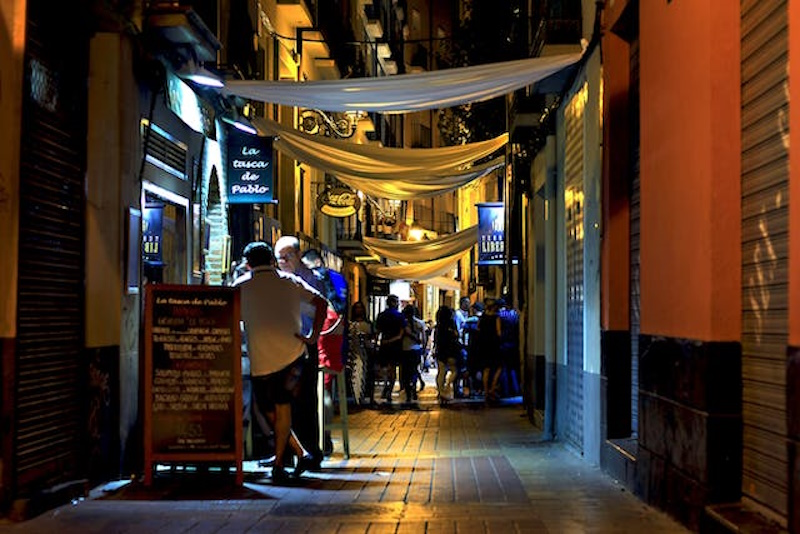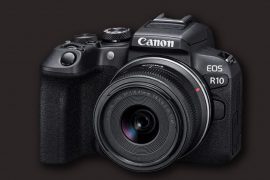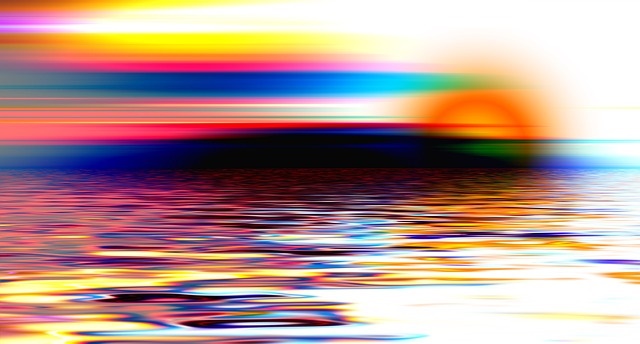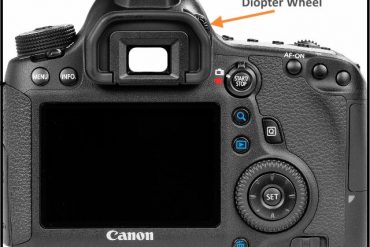Street photography goes beyond simply capturing moments. It’s about preserving the stories that unfold in busy streets and public spaces. It captures the true essence of everyday life, showcasing the unadulterated beauty of often overlooked moments.
Defining Street Photography
Street photography is a form of storytelling; each photograph becomes a chapter in a larger narrative. It allows viewers to connect with the subjects and the environment, evoking emotions and sparking curiosity about the lives and stories behind the captured moments.
Beyond its artistic value, street photography also documents history as it happens. It becomes a time capsule, preserving moments that might otherwise be forgotten, providing future generations a window into our present-day world.
Watch the Video: Street Photography Tips and Techniques
To complement this guide, we’ve created a video that brings these street photography tips and techniques to life! Whether you’re a beginner looking for practical advice or a seasoned photographer seeking fresh inspiration, the video explores key insights and visual examples to help you elevate your street photography game. Watch it below and don’t forget to subscribe to our YouTube channel for more photography content!
A Glimpse into History
The roots of street photography trace back to the early 20th century when portable cameras became more accessible. Pioneers like Henri Cartier-Bresson and Walker Evans embraced this style, using small cameras to capture the essence of city life and societal changes. Their work laid the foundation for what street photography would become—a medium to document the world’s unscripted moments.
Over time, street photography evolved alongside technological advancements. From film cameras to digital, and now smartphone photography, the tools may have changed, but the essence remains the same—to freeze moments in time.

Photo by Soubhagya Maharana
The Main Features of Street Photography
- Candid Moments: Street photography captures genuine and spontaneous moments in public spaces, showcasing the true essence of everyday life. It captures those unplanned moments that happen naturally, reflecting authenticity.
- Urban Storytelling: Street photography tells visual stories about urban life, documenting the people, cultures, and lively energy that flow through city streets. It captures the unique character of different locations.
- Dynamic Environments: Street photographers thrive in dynamic and ever-changing environments, adapting to different lighting, movement, and unexpected elements. They capture the essence of the moment amidst these dynamic conditions.
- Diverse Subjects: Street photography covers a wide range of subjects, from busy cityscapes to intimate portraits. It can focus on individuals, crowds, architecture, or even abstract elements found in the urban landscape.
- Emotional Impact: Successful street photography evokes emotions and sparks curiosity. It invites viewers to ponder the stories behind the captured moments, connecting the image and the observer.
- Artistic Expression: Street photography is an artistic expression that allows for creative experimentation. It encourages photographers to explore composition, perspective, and storytelling techniques to convey their unique vision.
- Reflecting Reality: Street photography reflects reality without manipulation or staging. Its goal is to portray life as it is, presenting an authentic depiction of the world around us.

Photo by t.
Equipment for Street Photography
1- Cameras suitable for street photography
When it comes to street photography, being versatile and agile is crucial. You need equipment that is lightweight but still delivers outstanding performance. Cameras come in different shapes and sizes, with three main types standing out: DSLRs, mirrorless cameras, and compact cameras.
-
DSLRs:
DSLRs (Digital Single-Lens Reflex) have always been the go-to cameras for photography. They provide exceptional image quality and a wide range of lens options. However, their bulky size may not be ideal for the fast-paced nature of street photography.
-
Mirrorless:
Mirrorless cameras have become increasingly popular due to their compact size and impressive image quality. Their electronic viewfinders allow for real-time previews, making it easier to compose shots on the go. This is a great advantage when capturing spontaneous moments on the streets.
-
Compact Cameras:
For ultimate portability, compact cameras are unbeatable. They fit perfectly in your pocket, offering decent image quality and ease of use. While they may lack some advanced features, they are perfect for those who prioritize convenience without compromising too much on quality.
Further reading: “Best Cameras For Street Photography – A Buyer’s Guide“
2- Lens Choices and their impact on Street Photography
Choosing the right lens significantly affects your street photography. A prime lens with a fixed focal length, such as 35mm or 50mm, is a popular choice. Its wider aperture allows for better low-light performance and creates that sought-after shallow depth of field, isolating subjects beautifully against the background.
Wide-angle lenses, like 24mm, provide a broader perspective, allowing you to capture more of the scene in tight spaces. On the other hand, telephoto lenses, such as 85mm or 135mm, let you shoot from a distance, making them ideal for candid shots without intruding on your subject’s privacy.
Further reading: “Best Lens for Street Photography – The Complete Guide“
3- Accessories that can enhance your street photography experience
Accessories can elevate your street photography game. A few essentials include:
- Camera Strap: A comfortable and secure camera strap is essential for long days of roaming the streets. A well-padded strap will prevent neck or shoulder strain, allowing you to focus on capturing the perfect shot without feeling weighed down. Look for straps with quick-release mechanisms for easy access to your camera and consider weather-resistant options if you plan to shoot in various conditions.
- Extra Batteries and Memory Cards: Street photography often involves capturing fleeting moments, and the last thing you want is to miss that perfect shot due to a drained battery or a full memory card. Always carry extra batteries and memory cards to ensure you have enough power and storage for even the most extended shooting sessions.
- Lens Hood: A lens hood is a simple yet invaluable accessory that protects your lens from scratches, dust, and stray light. It can also help reduce lens flare, resulting in sharper, clearer images. Choose a lens hood that fits your specific lens properly for optimal performance.
- Camera Bag: A well-designed camera bag or backpack is essential for transporting your equipment safely and efficiently. Choose a bag that fits your camera, lenses, and accessories comfortably and provides adequate padding to protect your gear from bumps and jostles. Consider weather-resistant options if you plan to shoot in various conditions.
- Tripod or Monopod: While street photography often involves capturing candid moments using handheld techniques, a tripod or monopod can be incredibly useful in certain situations. A tripod provides exceptional stability for low-light shots, long exposures, or capturing sharp panoramas. A monopod offers more flexibility and can be used to steady your camera while shooting in crowded or uneven terrain.
- Polarizing Filter: A polarizing filter is a versatile tool for street photographers. It helps reduce glare and reflections from surfaces like windows, water, and shiny objects, enhancing contrast and color saturation for more vibrant and dramatic images.

Photo by Real Mint

Photo by Tim Gouw
Techniques and Tips for Capturing Great Street Photos
1- Understanding composition and framing in dynamic environments
When shooting on the streets, you’re constantly faced with a dynamic and ever-changing environment. It’s important to be able to compose and frame your shots quickly and effectively to capture the best of what you see.
- Use the rule of thirds: This is a simple but effective technique that can help you create more balanced and visually appealing compositions. Divide your frame into thirds both horizontally and vertically, and place your subject along one of the intersecting lines or at one of the four intersections.
- Pay attention to leading lines: Leading lines are natural lines in your scene that can guide the viewer’s eye to your subject. They can be anything from roads and sidewalks to fences and telephone lines.
- Use negative space: Negative space is the empty space around your subject. It can help to isolate your subject and make it stand out.
- Experiment with different perspectives: Try shooting from different angles and heights to get a unique perspective on your subject.
- Foreground Elements: Incorporate elements in the foreground to create layers and depth, adding interest and context to your shot.

Photo by Pixabay
2- Approaches to capturing candid moments
One of the most challenging aspects of street photography is capturing candid moments. People are often wary of being photographed, so you need to be stealthy and patient.
- Blend in: Try to dress and act like you belong on the streets. This will help you blend in and make people less likely to notice you.
- Be patient: It takes time to capture candid moments. Don’t rush your shots. Take your time to observe the scene and wait for the right moment to take your photo. Anticipate moments rather than actively seeking them out.
- Use a zoom lens: A zoom lens can help you get closer to your subject without drawing attention to yourself.
- Be respectful: Always be respectful of your subjects. If someone asks you not to take their photo, politely decline.
- Framing the Narrative: Look for stories within the scene—contrasts, emotions, interactions—and aim to capture these narratives in your frame.

Photo by Kamaji Ogino
3- Working with light and shadows in urban settings
Light and shadows can be used to create dramatic and interesting effects in street photography.
- Pay attention to the direction of light: The direction of light can have a big impact on the mood and feel of your photo. Sidelight can create harsh shadows, while backlight can create silhouettes.
- Use shadows to add depth: Shadows can add depth and dimension to your photos. Look for scenes where there is a contrast between light and shadow.
- Use light to create leading lines: Light can also be used to create leading lines. For example, you could use a streetlamp to guide the viewer’s eye to your subject.

Photo by Jacek Dylag on Unsplash
4- Dealing with challenges like crowds, permissions, and privacy
Crowds, permissions, and privacy are common challenges in street photography. Here are a few tips for dealing with them:
- Crowds and Movement: Embrace the chaos; sometimes, crowds can add vibrancy and energy to your shots. Experiment with long exposures to capture movement creatively.
- Be patient: Crowds can be frustrating, but it’s important to be patient. Don’t try to force your way through the crowd. Take your time and wait for the right moment to take your photo.
- Shoot from a distance: If you’re uncomfortable getting close to people, you can shoot from a distance. Use a zoom lens to get closer to your subject.
- Ask for permission: If you want to photograph someone, always ask for their permission first. Be respectful of their decision, whether they say yes or no.
- Be aware of your surroundings: Be aware of your surroundings and avoid taking photos that could make people feel uncomfortable or unsafe.

Photo by Pixabay
Legal and Ethical Considerations in Street Photography
Although Street photography is a great way to explore your city, meet new people, and tell stories through your images, however, it’s important to be aware of the legal and ethical considerations involved in street photography.
1- Knowing laws and regulations regarding photographing in public places
Laws on photographing in public places differ from country to country and even from city to city. In most countries, it is generally legal to take photos of people in public without their permission. However, there are exceptions. For instance, it is often illegal to take photos of people in private areas like bathrooms or locker rooms. It is also important to respect people’s privacy and avoid taking photos that could make them feel uncomfortable or unsafe.
The laws on shooting in public places, like streets, differ from country to country
- In the United States: the First Amendment protects the right to freedom of speech, which includes the right to take photos in public places. However, there are limitations to this right. For example, it is illegal to take photos of people engaged in private activities like sunbathing or changing. It is also illegal to take photos of people in areas where they have a reasonable expectation of privacy, such as restrooms or changing rooms.
- In the United Kingdom: the common law does not specifically protect the right to take photos in public places. However, there are statutes that regulate photography in certain contexts. For instance, the Protection from Harassment Act 1997 makes it an offense to use surveillance to harass, alarm, or distress another person. The Data Protection Act 1998 protects the right to privacy and makes it an offense to process personal data without consent.
To avoid legal issues when doing street photography, it is best to be familiar with the laws in your jurisdiction. Some regions have specific laws governing photography in public spaces, especially concerning commercial use, sensitive locations, or photographing children. Familiarize yourself with local laws to avoid legal issues.

Photo by Pixabay
2- Respecting privacy and obtaining consent when necessary
While it is generally legal to photograph people in public places without their consent, it is important to be respectful of their privacy. There are some situations where you may want to consider obtaining consent before taking a photo. For example, if you are photographing a child, it is always a good idea to get permission from their parents or guardians.
You may also want to obtain consent if you are photographing someone who is in a vulnerable situation, such as someone who is homeless or someone who is being harassed.
There are a few different ways to obtain consent for a photograph. You can ask the person directly, or you can also use a model release form. A model release form is a legal document that gives the photographer permission to use the person’s image in their work.
If you are not sure whether or not you need to obtain consent, it is always better to err on the side of caution and ask for permission. This will help to avoid any legal problems down the road, and it will also help to ensure that the people you photograph feel comfortable and respected.
3- Balancing artistic expression with ethical responsibilities
Street photography is a form of art, and as such, it is important to balance artistic expression with ethical responsibility. There are a few things to keep in mind when shooting street photography.
- Be respectful of your subjects. Remember that the people you are photographing are real people with real lives. Treat them with respect, and avoid taking photos that could make them feel uncomfortable or unsafe.
- Be honest in your representation of reality. Don’t stage or manipulate scenes in order to create a certain effect. Your photos should be a true and honest representation of the world around you.
- Be sensitive to the cultural context in which you are shooting. Different cultures have different norms and expectations regarding photography. Be aware of these norms and expectations, and avoid taking photos that could be considered offensive or disrespectful.
- Consider the impact of your photos. Think about how your photos might be used or interpreted by others. Consider the potential impact of your photos on the people you photograph, as well as on society as a whole.
Street photography can be a challenging but rewarding genre. By following these guidelines, you can help to ensure that your work is both ethical and enjoyable to create.

Notable Street Photographers and Their Work
- Highlighting influential street photographers
There are many great street photographers who have made significant contributions to the genre. Here are a few of the most notable:
- Henri Cartier-Bresson. Henri Cartier-Bresson is often considered the father of modern street photography. He was known for his ability to capture the “decisive moment” – the precise moment of action that encapsulates a whole story in an image.

- Garry Winogrand. Garry Winogrand was known for his humanistic approach to street photography. He was interested in capturing the everyday lives of ordinary people, and his photos often have a sense of humor and irony.

- Vivian Maier. Vivian Maier was a nanny and street photographer who worked in Chicago from the 1950s to the 1970s. Her work was not discovered until the 2000s, and she is now considered one of the most important street photographers of all time.

- Robert Doisneau. Robert Doisneau was a French photographer who is known for his romantic and often humorous images of Paris. His most famous photograph is “The Kiss,” which captures a couple passionately kissing on a busy street in Paris.

- Saul Leiter. Saul Leiter was an American photographer who is known for his vibrant and colorful images of New York City. His work was not discovered until the 1990s, and he is now considered one of the most important street photographers of the 20th century.

- Daido Moriyama: Known for his gritty, high-contrast black-and-white images, Moriyama’s work often portrayed the rawness and chaos of urban life in Japan. His unconventional and raw style has been influential globally.

- Lee Friedlander: Known for his innovative use of reflections and juxtapositions, Friedlander’s work often played with perception, blurring the lines between the subject and the environment.

- Mary Ellen Mark: Focused on capturing the marginalized and vulnerable, Mark’s compassionate approach to street photography resulted in powerful and evocative images that tell poignant stories.

- Robert Frank: His groundbreaking work in “The Americans” depicted a candid and critical view of American society, challenging conventions and paving the way for documentary and street photography.

- Joel Meyerowitz: A master of color street photography, Meyerowitz’s vibrant and dynamic compositions celebrate the beauty in the ordinary, often focusing on the streets of New York City.

These are just a few of the many great street photographers who have made significant contributions to the genre. Their work has inspired and influenced countless other photographers, and it continues to be a source of inspiration for street photographers today.
Conclusion
In the vibrant world of street photography, every corner holds a story waiting to be captured. With the right techniques and a keen eye, these ordinary moments transform into extraordinary narratives.
Remember, street photography is more than snapshots—it’s a reflection of life’s authenticity, diversity, and beauty. Embrace the challenges, respect the ethics, and let your lens paint the ever-evolving canvas of the streets. So, step out, explore, and keep clicking to immortalize the essence of street life through your lens.
Related Posts
Best Cameras For Street Photography – A Buyer’s Guide
Best Lens for Street Photography – The Complete Guide
Street Photography – Tips For Capturing Natural Moments
Thanks for reading, I hope you enjoyed the article, if you have any questions just drop them below & I will be happy to answer you.
The featured Photo by Pixabay
If you enjoy the site, don’t forget to subscribe, we will only inform you when a new article is posted.









